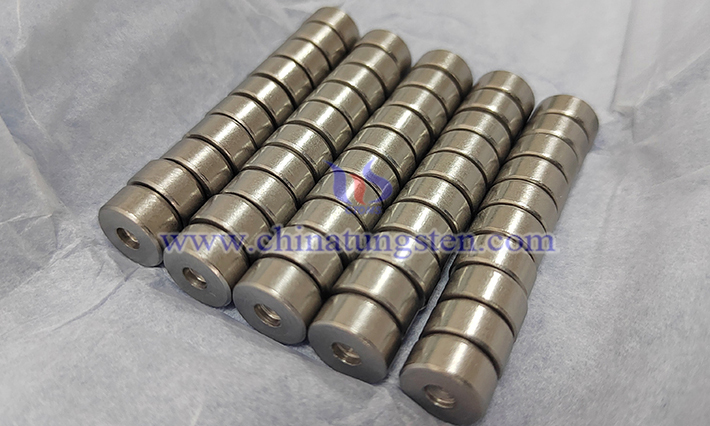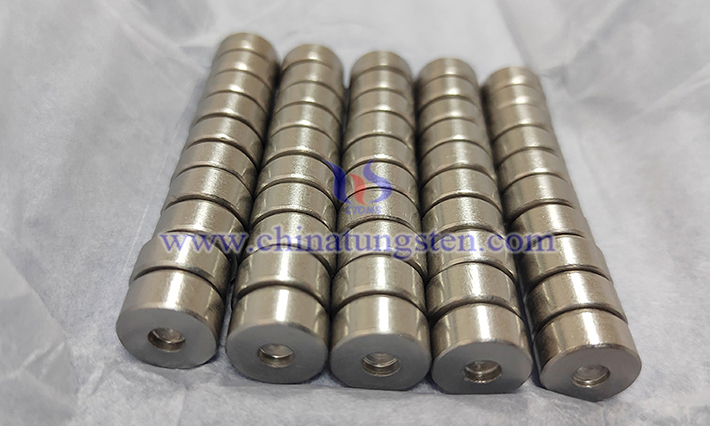Optimization of Electron Emission Uniformity of Barium Tungsten Electrode
- Details
- Category: Tungsten Information
- Published on Friday, 06 June 2025 18:52
Barium tungsten electrode is a hot cathode material widely used in vacuum electronic devices, known for its high electron emission ability and stability. The uniformity of electron emission is crucial to improving device performance, optimizing current distribution and extending service life.

1. Factors Affecting Electron Emission Uniformity
The uniformity of electron emission is affected by many factors, the following are some of the main aspects:
(1) Matrix structure: The pore structure and pore size distribution of the tungsten matrix play a key role in the diffusion of barium and the uniformity of electron emission. Uneven pore distribution may lead to local emission capacity differences.
(2) Distribution of barium: The uniform distribution of barium on the electrode surface is the key to achieving uniform electron emission. If the barium is unevenly distributed, emission hot spots or weak emission areas may appear.
(3) Operating temperature: Too high or too low operating temperature will affect the uniformity of electron emission. High temperature may accelerate the volatilization of barium, while low temperature may reduce the emission efficiency.
(4) Surface contamination: The presence of surface impurities or oxides will hinder electron emission, resulting in uneven emission performance.

2. Methods for Optimizing Electron Emission Uniformity
In order to improve the electron emission uniformity of barium tungsten electrodes, the following strategies can be adopted from the aspects of material preparation, process improvement and theoretical research:
(1) Improving the matrix structure
Narrow particle size tungsten powder: Using narrow particle size tungsten powder and combining it with spark plasma sintering technology, a tungsten matrix with a narrower pore size distribution can be prepared. This structure helps the uniform diffusion of barium, thereby improving the uniformity of electron emission.
Spherical tungsten powder: Spherical tungsten powder is prepared by radio frequency plasma spheroidization technology, which can obtain a matrix with smooth pore channels, good internal pore connectivity and uniform pore size distribution, further optimizing the emission performance.
(2) Optimizing the distribution of barium
Liquid phase method: Improving the aluminate phase composition through the liquid phase method can enhance the uniform distribution of barium on the electrode surface, thereby improving the emission uniformity.
Surface treatment: Use surface treatment techniques such as chemical cleaning or heat treatment to remove surface impurities and oxides to ensure that barium can be evenly covered on the tungsten substrate.
(3) Control operating temperature
Temperature management: Precisely control the operating temperature of the electrode to avoid uneven emission caused by too high or too low temperature. The appropriate temperature range can maintain stable release of barium.
Thermal design: Optimize thermal management in device design to ensure uniform temperature distribution of the electrode during operation and reduce the impact of local overheating or cooling on emission performance.
(4) Theoretical research and simulation
Dipole theory: Through theoretical calculations and physical models (such as dipole theory), the intrinsic mechanism of electron emission from barium tungsten electrodes is studied to provide a scientific basis for optimized design.
Numerical simulation: Use numerical simulation tools to analyze the effects of electrode structure, material composition and operating conditions on emission uniformity, and predict and optimize electrode performance.
- Chinatungsten Online: www.tungsten.com.cn
- CTIA GROUP LTD: en.ctia.group
- Tungsten News & Price: www.ctia.com.cn
- Molybdenum News & Price: news.molybdenum.com.cn
- Tel.: 86 592 5129696; Email: sales@chinatungsten.com



 sales@chinatungsten.com
sales@chinatungsten.com